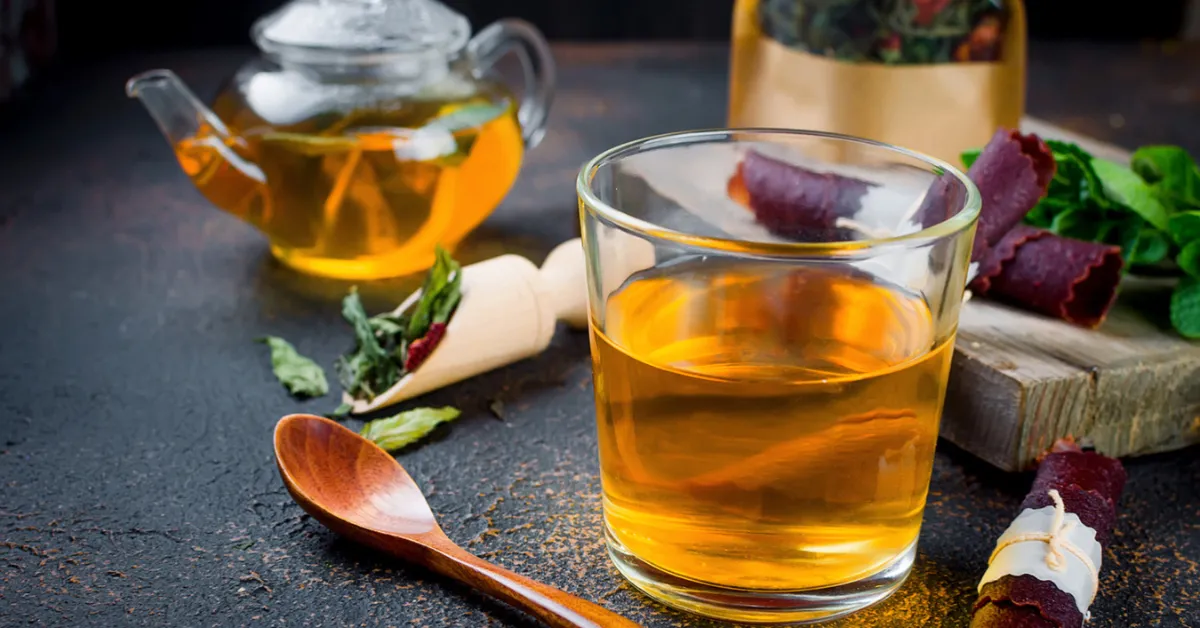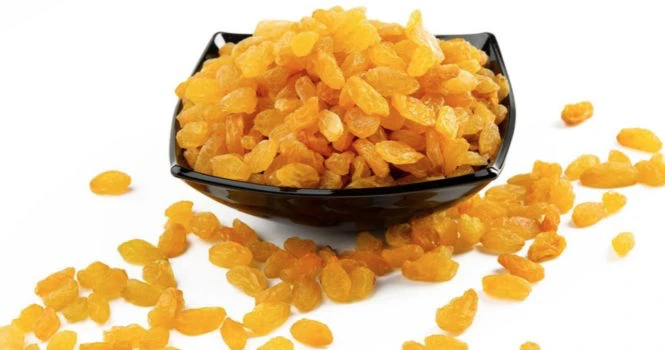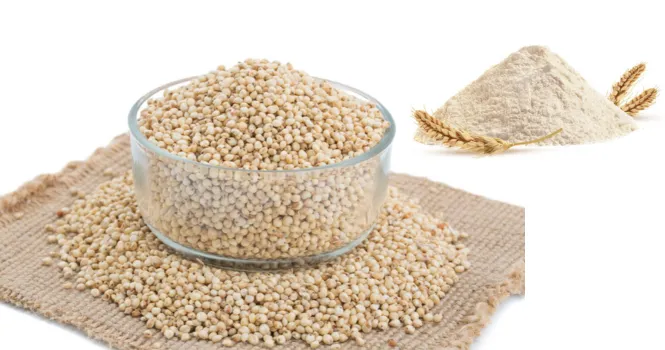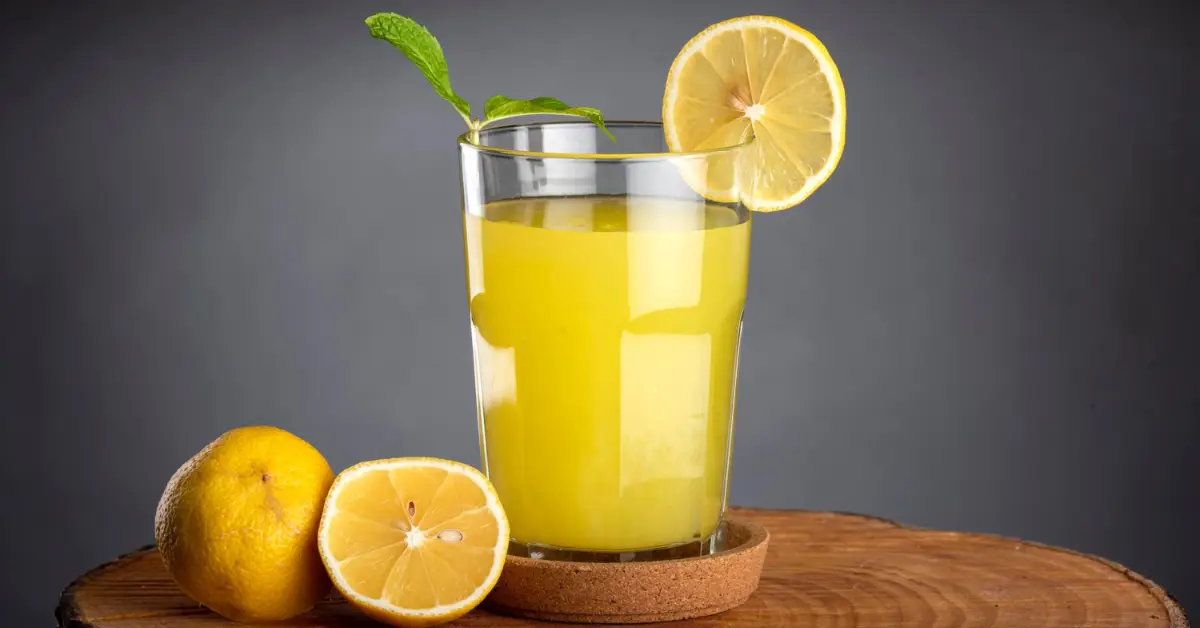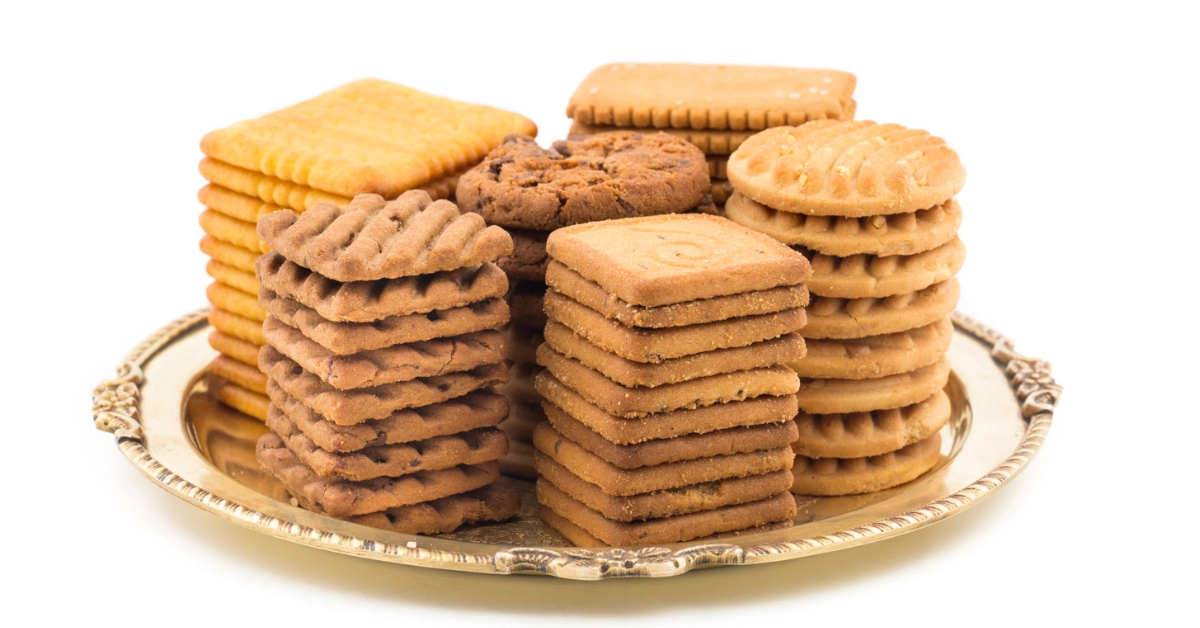Poha Nutrition Facts – Understanding the Calories and Health Benefits of Poha
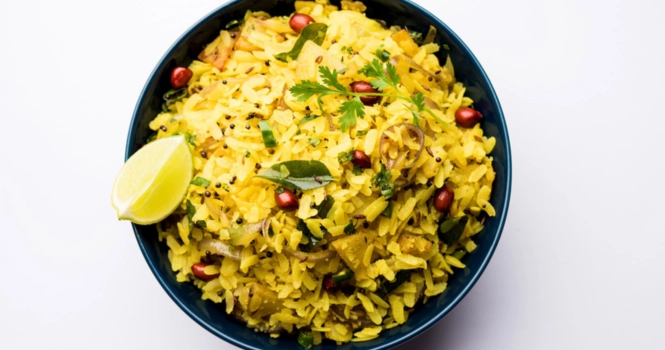
Calories in Poha are an important aspect to consider when evaluating its nutritional profile.
We will look into the details of this popular Indian breakfast dish. Poha, made from flattened rice, is not only a staple in many households but also a source of quick, easy-to-digest energy.
What is Poha?
Poha, also known as flattened rice or beaten rice, is a popular dish in Indian cuisine, especially in the western and central regions of India. It’s made from dehusked rice which is flattened into light, dry flakes. These flakes are very light and airy, and they swell when added to liquid.
Poha is known for its ease of cooking and digestibility.
How is Poha Processed ?
Poha, or flattened rice, is prepared by the following process
- Parboiling: The rice is partially cooked in boiling water.
- Flattening: After parboiling, the rice is rolled or pressed to flatten it.
- Drying: The flattened rice is then dried.

Types of Poha
Poha, or flattened rice, comes in different varieties, each suited to specific dishes and cooking methods. The main types of poha are distinguished by the thickness of the flakes and sometimes by the type of rice used to make them.
1. Thin Poha (Paper Poha or Nylon Poha):
- Very thin and delicate flakes that are almost translucent.
- Ideal for snacks like chivda where a crispy texture is desired. These flakes become crispy quickly when fried and are not typically used for the traditional poha breakfast dish, as they are too delicate and can turn mushy.
2. Medium Poha:
- These are slightly thicker than the thin variety and are the most commonly used type.
- Perfect for making the traditional poha breakfast dish. They absorb liquids well, becoming soft without disintegrating, and hold their shape nicely when cooked with spices, vegetables, or nuts.
3. Thick Poha (Jada Poha):
- These are the thickest variety of poha flakes.
- Suitable for dishes that require longer cooking times or more liquid absorption. They retain a firmer texture even after soaking and cooking, making them ideal for heartier dishes or poha recipes that include yogurt or buttermilk.
4. Red Rice Poha:
- Made from red rice, these flakes have a distinct color and a slightly nuttier flavor compared to white rice poha.
- Nutritionally richer due to the red rice, they can be used in the same way as white rice poha but add a different flavor profile and more fiber to dishes.
5. Organic Poha:
- Made from rice that is cultivated using organic farming methods, without chemical pesticides or fertilizers.
- Similar to regular poha but preferred by those looking for organic food options.
6. Brown Rice Poha:
- Made from whole grain brown rice, these flakes are higher in fiber and nutrients compared to white rice poha.
- They can be used in any poha recipe and provide a healthier, more wholesome alternative to white rice poha.
One Cup Poha Nutritional Facts
| Nutrient | Amount (Approx.) |
| Calories | 160 kcal |
| Protein | 3 g |
| Carbohydrates | 34 g |
| Fiber | 2 g |
| Fat | 1 g |
| Sodium | 250 mg |
| Potassium | 115 mg |
| Iron | 1.8 mg |
| Calcium | 20 mg |
| Vitamin C | 0.9 mg |
| Vitamin B6 | 0.1 mg |
| Magnesium | 20 mg |
Note:
- Calories: The calorie content mainly comes from carbohydrates.
- Protein: Poha has a modest amount of protein.
- Carbohydrates: It’s primarily a source of easily digestible carbs.
- Fiber: Contains dietary fiber, beneficial for digestive health.
- Micronutrients: Poha provides small amounts of various vitamins and minerals.
Nutritional content for various Preparations
| Description | Serving Size | Calories (Approx.) | Protein (Approx.) | Carbs (Approx.) | Notes |
| Poha (Uncooked) | 100g | 360 | 8g | 77g | Standard uncooked Poha |
| Poha (Cooked) | 100g | 130 | 2.5g | 28g | Plain cooked Poha without additional ingredients |
| Poha (Cooked) | 1 bowl (139g) | 180 | 3.5g | 39g | – |
| Poha (Cooked with Onion) | 1 plate | 250 | 4g | 53g | Includes standard amount of onion |
| Poha (Cooked with Onion & Tomato) | 1 plate | 270 | 4.5g | 58g | – |
| Poha Chivda | 1 cup | 300 | 5g | 40g | Snack version with spices and nuts |
| Poha (Cooked with Peanuts) | 1 plate | 350 | 8g | 60g | Includes a standard serving of peanuts |
| Poha (Cooked with Vegetables) | 1 plate | 280 | 5g | 47g | Mixed vegetables included |
| Poha (Cooked) | 1 kg | Approx. 1300 | Approx. 25g | Approx. 280g | – |
| Poha (Cooked) | 1 cup | 160 | 3g | 34g | Standard cup serving |
| Poha (Cooked) | 200g | 260 | 5g | 56g | – |
| Poha (Cooked with Peanuts) | 200g | 400 | 10g | 72g | – |
| Poha (Cooked) Nutritional Value | 100g | 130 | 2.5g | 28g | Includes standard ingredients |
| Poha (Uncooked) | 100g | 360 | 8g | 77g | – |
| Poha (Cooked with Onion & Tomato) | 1 plate | 270 | 4.5g | 58g | – |
| Poha (Cooked with Peanuts) | 1 plate | 350 | 8g | 60g | – |
| Poha (Cooked) | 2 cups (278g) | 360 | 7g | 78g | – |
Health Benefits
Including poha (flattened rice) in your diet can offer several health benefits, making it a nutritious choice especially for those seeking a light yet energizing meal. Let’s look at some of the key health benefits of poha:
1. Easily Digestible: Poha is light on the stomach and easy to digest, making it a suitable food choice for all ages, including children and the elderly.
2. Good Source of Carbohydrates: Poha is primarily a source of carbohydrates, providing energy to the body. The carbohydrates in poha are complex, which release energy slowly into the bloodstream, helping in maintaining stable blood sugar levels.
3. Low in Calories: Poha is relatively low in calories, making it a good option for people trying to lose weight. It can be a part of a healthy diet when prepared with minimal oil and healthy ingredients like vegetables.
4. Gluten-Free: For individuals with gluten intolerance or celiac disease, poha offers a nutritious gluten-free alternative to wheat-based products.
5. Low Glycemic Index: The glycemic index of poha is low to moderate, which means it does not cause a rapid spike in blood sugar levels, making it suitable for diabetics when prepared with minimal sugars and healthy fats.
6. Versatile and Nutrient-Rich: Poha can be made more nutritious by adding vegetables, lean proteins (like chicken, fish, or legumes), peanuts, or seeds, which add to its vitamin, mineral, and protein content.
It’s important to note that while poha is healthy, the healthiness of the dish as a whole depends on the way it is prepared and the ingredients added.
Using less oil, avoiding excessive salt, and including a variety of vegetables and protein sources can enhance the nutritional value of a poha dish.
What is “Kanda” Poha and How to Prepare it?
Kanda Poha is a popular Indian breakfast dish originating from the state of Maharashtra. “Kanda” means onion in Marathi, and “Poha” refers to flattened rice. It’s known for its simplicity and delightful flavors. Here’s a brief step-by-step recipe:
Ingredients:
- Poha (flattened rice) – 2 cups
- Onion, finely chopped – 1 large
- Mustard seeds – 1 tsp
- Cumin seeds – ½ tsp
- Green chilies, finely chopped – 2
- Curry leaves – 6-8
- Turmeric powder – ½ tsp
- Salt – to taste
- Sugar – 1 tsp (optional)
- Lemon juice – 1 tbsp
- Fresh coriander (cilantro), chopped – for garnish
- Oil – 2 tbsp
- Peanuts – ¼ cup (optional)
- Fresh grated coconut (optional) – for garnish
Steps:
1. Prepare Poha: Rinse the poha in a colander under running water. Drain and set aside to soften. Be careful not to over-soak, or it will become mushy.
2. Heat Oil: In a pan, heat oil. Add mustard seeds and let them splutter. Then add cumin seeds.
3. Sauté Aromatics: Add chopped onions, green chilies, and curry leaves. Sauté until onions are translucent.
4. Seasoning: Add turmeric powder and peanuts (if using), and stir well.
5. Add Poha: Add the softened poha to the pan. Mix gently to combine with the spices and onion.
6. Flavoring: Season with salt and sugar. Mix gently and cook for a few minutes until the poha is heated through.
7. Finish & Garnish: Turn off the heat. Add lemon juice and mix. Garnish with fresh coriander and grated coconut (if using).
8. Serve: Serve hot. Kanda Poha is typically enjoyed as a breakfast or snack.
The key to perfect Kanda Poha is to ensure the poha is neither too dry nor too mushy. Adjust the spices and chilies according to your taste preference. This dish is valued for its combination of simple flavors and ease of preparation.
How Much Poha Should You Consume Every Day?
Determining the right amount of poha (flattened rice) to consume daily depends on various individual factors such as your overall diet, caloric needs, health goals, and lifestyle. Poha, while nutritious, should be balanced with other elements of a healthy diet. Here are some guidelines to consider:
1. Caloric and Nutritional Balance: Poha is primarily a source of carbohydrates. Your daily intake should fit into a balanced diet that includes adequate protein, healthy fats, vitamins, and minerals. Consider your total daily calorie needs, which vary based on age, gender, physical activity level, and health goals.
2. Health Goals:
- For weight management, portion control is essential. Poha is low in calories but can become high-calorie if prepared with a lot of oil, nuts, or fried items.
- If you’re managing conditions like diabetes, be mindful of the carbohydrate content and portion sizes, since poha is a carb-rich food.
3. Physical Activity: If you lead an active lifestyle, you might need more carbohydrates for energy, and hence, a larger portion of poha might be suitable.
4. Meal Planning:
- As a main meal (like breakfast), a serving of about 1 cup of cooked poha (approximately 150-200 grams) can be a reasonable portion for an adult. This provides around 160-250 calories, depending on the preparation.
- If consuming poha as a snack, a smaller portion (around half a cup) might be more appropriate.
5. Dietary Diversity: Ensure you’re not over-relying on poha. A varied diet is crucial for meeting all nutritional requirements.
6. Individual Dietary Needs: Personal health conditions, metabolic health, and dietary preferences should guide your portion sizes. For instance, adding vegetables and a protein source to poha can make it more filling and nutritionally balanced.
7. Consultation with Professionals: If you have specific health concerns, dietary restrictions, or nutritional goals, consulting with a dietitian is advisable for personalized recommendations.
Remember, these are general guidelines, and individual needs can vary.
Moderation and variety are key to a healthy diet, so incorporating poha as part of a diverse and balanced dietary pattern is the best approach.
Is Poha good for weight loss?
Poha (flattened rice) can be a good choice for weight loss when included as part of a balanced diet, primarily due to the following reasons:
1. Low in Calories: Poha is relatively low in calories, which can be beneficial for creating a calorie deficit, a key factor in weight loss.
2. Satiating: It can be quite filling, which helps in controlling hunger pangs and reducing the likelihood of overeating.
3. Customizable: Poha can be made more nutritious and weight-loss-friendly by adding vegetables, lean proteins, and using minimal oil in preparation.
4. Complex Carbohydrates: It contains complex carbohydrates, which provide a steady release of energy and can keep you fuller for longer.
However, the key is in the preparation and portion control. Avoiding high-calorie additions like excessive oil, nuts, or fried items is important. Balancing poha with other nutrients like protein and fiber from vegetables can make it a more complete and satisfying meal.
Is Poha good for diabetes?
Poha can be suitable for people with diabetes, but certain considerations should be taken into account:
1. Low to Moderate Glycemic Index (GI): Poha has a low to moderate GI, which means it doesn’t cause rapid spikes in blood sugar levels.
2. Portion Size: It’s crucial to monitor the portion size because poha is a carbohydrate-rich food.
3. Balanced Eating: Combining poha with sources of protein and fiber can help slow down the release of glucose into the bloodstream, leading to more stable blood sugar levels.
4. Preparation Method: Preparing poha with minimal sugar and unhealthy fats is important. Including vegetables and using healthier cooking methods like sautéing or steaming can make it more diabetes-friendly.
5. Regular Monitoring: Individuals with diabetes should regularly monitor their blood sugar levels to understand how different foods affect them, as individual responses can vary.
Poha can be a part of a weight loss diet and a diabetic-friendly diet when prepared healthily and consumed in appropriate portion sizes.
As always, it should be part of a varied and balanced diet, and individuals with specific health concerns should consult with your doctor for personalized advice.
Adverse Effects of Having Poha
While poha (flattened rice) is generally considered a healthy and safe food for most people, there are some potential adverse effects to be aware of, especially when consumed inappropriately or in excess:
1. High Carbohydrate Content: Poha is rich in carbohydrates. Overconsumption, especially without balancing with protein and fiber, can lead to weight gain and may not be ideal for people trying to manage their blood sugar levels, such as those with diabetes.
2. Low Protein: Poha is not a significant source of protein. A diet relying heavily on poha might lead to inadequate protein intake unless supplemented with other protein sources.
3. Nutritional Imbalance: If poha is consumed regularly without a variety of other foods, it could contribute to a lack of nutritional diversity, potentially leading to deficiencies in certain vitamins, minerals, and other nutrients.
4. Caloric Additions: Poha dishes often include high-calorie ingredients like nuts, fried items, and oil. Excessive use of these additions can turn a typically healthy dish into a high-calorie meal, which might not be suitable for weight management.
5. Gastrointestinal Issues: For some people, especially those not used to eating poha or those with sensitive digestive systems, consuming it in large quantities might lead to digestive issues like bloating or constipation.
6. Processed Varieties: Some commercially available poha might be processed with added preservatives or artificial flavors, which may not be as healthy as homemade or natural poha.
7. Allergies or Sensitivities: Although rare, some individuals might be allergic or sensitive to rice or specific ingredients commonly used in poha preparations.
To mitigate these potential adverse effects, it’s advisable to consume poha in moderation, balance it with other nutrient-rich foods, and be mindful of the ingredients added during preparation. As with any food, individual responses can vary, so it’s important to consult your dietician and adjust your diet accordingly.
Frequently Asked Questions
How many calories are in a bowl of poha?
A typical bowl of cooked poha (approximately 150-200 grams) contains around 180-250 calories. This can vary based on additional ingredients like peanuts, potatoes, vegetables, and the amount of oil used in preparation.
How many calories are in 100 grams of poha?
- For uncooked poha, 100 grams contains about 360 calories. This is for the dry flakes.
- For cooked poha, 100 grams would have significantly fewer calories because of the added water content and would be around 130-180 calories, depending on the preparation.
Is poha high calorie food?
Poha itself, especially when prepared in a traditional, simple manner, is not particularly high in calories. It becomes high-calorie if prepared with generous amounts of oil, nuts, or other high-calorie ingredients.
Compared to many other breakfast options, poha can be considered a moderately low-calorie choice, especially when prepared with minimal oil and served with vegetables.
Is Poha Better Than Rice for Weight Loss?
1. Caloric Density: Poha is often considered better than white rice for weight loss due to its lower caloric density. This means you can eat a satisfying portion without consuming too many calories.
2. Fiber Content: While both poha and white rice are low in fiber, poha can be easily combined with vegetables and legumes to increase its fiber content, which is beneficial for weight loss.
3. Glycemic Index (GI): Poha has a low to moderate GI, similar to most types of rice, meaning it doesn’t cause rapid spikes in blood sugar levels. However, the overall GI can be reduced further by adding fiber-rich vegetables or protein sources.
4. Satiety: Poha can be more filling due to its texture and the way it is prepared with other ingredients like onions, mustard seeds, and curry leaves, which add flavor without significantly increasing calories.
Is Poha OK for Weight Loss?
Yes, poha can be a good option for weight loss when prepared healthily. To make it more suitable for weight loss:
- Use minimal oil.
- Include vegetables to add nutrients and fiber.
- Balance it with protein sources like legumes, paneer, or yogurt.
- Control portion sizes to keep calories in check.
Is It OK to Eat Poha While Dieting?
Absolutely, poha can be a part of a weight-loss diet:
- It’s a source of good carbohydrates, providing energy without being too calorie-dense.
- Customizable: You can add a variety of vegetables and lean proteins to make it a balanced meal.
- It’s easy to digest and light on the stomach, making it a suitable meal for those on a diet.
Is poha high in protein?
Poha (flattened rice) is not high in protein. It’s primarily a carbohydrate source, with a modest protein content.
Typically, poha contains about 2-3 grams of protein per 100 grams (uncooked). To increase the protein content for a meal, poha can be paired with higher-protein foods such as legumes, paneer (Indian cottage cheese), yogurt, or nuts.
Does poha have less calories than rice?
Poha generally has fewer calories than an equivalent amount of white rice, especially when cooked. This is because poha, being flattened rice, absorbs more water and becomes bulkier, leading to a lower calorie density.
For instance, 100 grams of uncooked poha contains about 360 calories, whereas 100 grams of uncooked white rice contains around 360-380 calories.
However, when cooked, both absorb water, and the difference in calorie content becomes more pronounced, with poha typically having fewer calories per serving.
Is poha good for muscle building?
While poha isn’t a high-protein food by itself, it can be incorporated into a muscle-building diet as a carbohydrate source. Carbohydrates are important in a muscle-building diet as they provide the energy necessary for workouts and help in the recovery process.
To make poha suitable for a muscle-building diet, combine it with protein-rich foods. For example, adding eggs, chicken, paneer, or mixing it with a legume dish can create a more balanced meal with both carbohydrates and protein.
Also, the ease of digestion and the low to moderate glycemic index of poha make it a good post-workout meal when combined with a good protein source.
What are Indori, Batata and Makai Poha?
Indori, Batata, and Makai poha are variations of the popular Indian dish “poha,” made from flattened rice and commonly enjoyed as a breakfast or snack. Each variation adds a unique twist to the traditional poha:
Indori Poha: A specialty from Indore, Madhya Pradesh, Indori poha is known for its light and fluffy texture, typically garnished with sev (crispy chickpea noodles), chopped onions, and pomegranate seeds.
It’s often served with a side of jalebi (a sweet syrup-soaked dessert) and is mildly spiced, with a hint of sweetness from sugar or fennel seeds.
Batata Poha: Originating from Maharashtra, Batata poha includes diced potatoes (“batata” means potato in Marathi) that are cooked with the poha.
The potatoes add a hearty texture to the dish, and it’s usually seasoned with mustard seeds, turmeric, green chilies, and garnished with fresh coriander and a squeeze of lemon juice.
Makai Poha: This variation features sweet corn (“makai” in Hindi) as the main ingredient alongside poha. The sweet corn kernels add a subtle sweetness and crunch to the dish.
Makai poha is often prepared with a similar seasoning as other poha varieties, with mustard seeds, turmeric, and green chilies, and garnished with coriander leaves and lemon juice.
Each of these poha varieties reflects regional tastes and ingredients, offering different flavors and textures while maintaining the essence of the classic poha dish.
Can Poha be consumed in High Uric acid and in Typhoid Patients?
Poha in High Uric Acid:
Yes, poha can generally be consumed by individuals with high uric acid levels. It is a low-purine food, which means it does not contribute significantly to uric acid production in the body. However, it’s important to prepare poha with minimal oil and avoid high-purine ingredients like certain meats or legumes.
Poha in Typhoid Patients:
Yes, poha can be a suitable food for typhoid patients as well. It is light, easy to digest, and provides a good source of carbohydrates for energy. When preparing poha for typhoid patients, it’s best to keep it simple, avoiding heavy spices, excessive oil, and any ingredients that might be hard to digest, like raw onions or chilies.
What is Puffed Rice?
Puffed rice, also known as “murmura” or “kurmura” in India, is a type of rice that has been expanded through a high-heat process, causing the grains to puff up and become light and crispy. This process can be done by heating rice kernels under high pressure or using a traditional method of roasting them in hot sand.
Puffed rice is commonly used in a variety of snacks and dishes across different cultures. In India, it’s a key ingredient in snacks like bhel puri and chaat, as well as in breakfast cereals. It’s also eaten as a light snack on its own or mixed with spices, nuts, and other ingredients for added flavor.
Due to its light texture, puffed rice is low in calories and easy to digest, making it a popular choice for those looking for a quick, low-calorie snack.
![]()



